Affiliate disclosure: This post may contain affiliate links. Please see our Privacy Policy.
Canning tomatoes is one of the best ways to preserve tomatoes for year-round use. They’re incredibly versatile, and there are literally dozens of tomato canning recipes for home preservation.
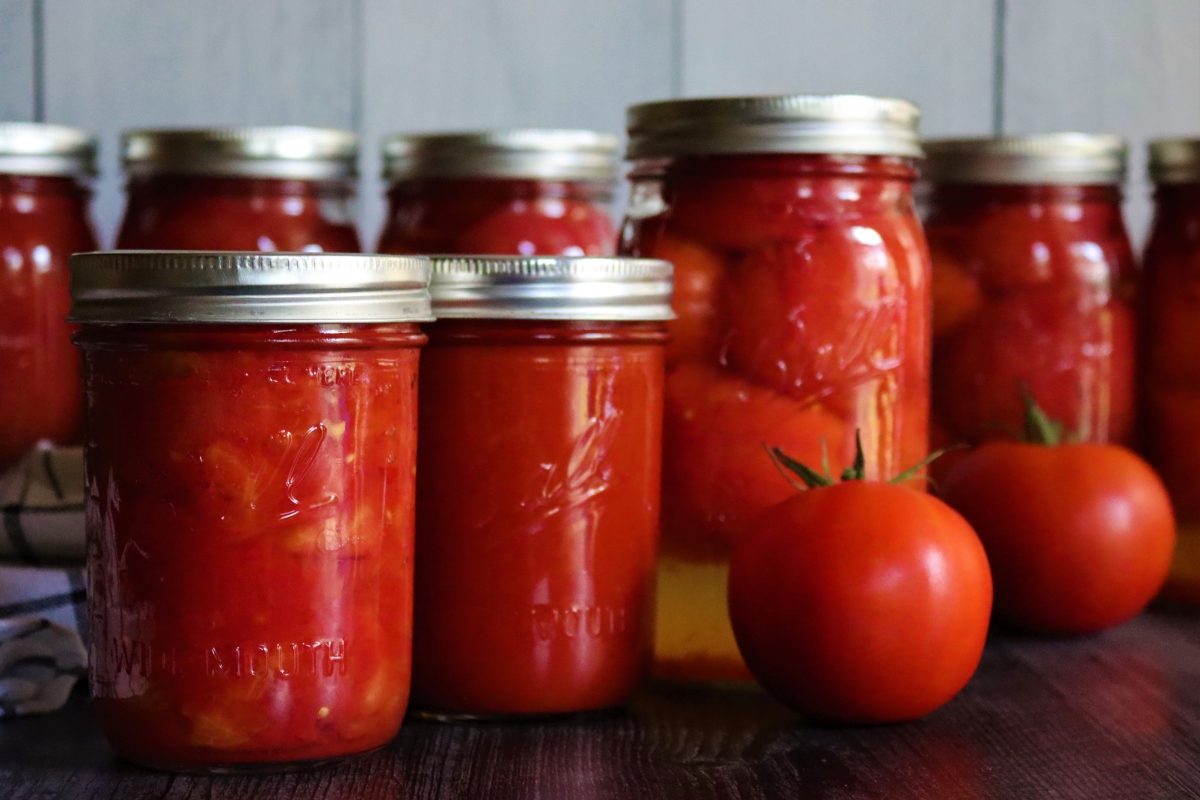
Table of Contents
- Acid Sources for Safely Canning Tomatoes
- Water Bath or Pressure Canner?
- Preparing Tomatoes for Canning
- Canning Whole Tomatoes (Or Halves)
- Canning Diced or Crushed Tomatoes
- Canning Tomato Salsa
- Canning Tomato Juice
- Canning Tomato Sauce
- Canning Spaghetti Sauce
- Canning Tomato Paste
- Canning Tomato Ketchup
- Canning Tomato Jam
- Creative Tomato Canning Recipes
- Cherry Tomato Canning Recipes
- Green Tomato Canning Recipes
- Summer Canning Recipes
- Food Preservation Tutorials
There’s something about canning tomatoes, especially homegrown tomatoes, that’s incredibly satisfying. Looking at all those full canning jars on the pantry shelf fills your heart and soul, just as they will fill your belly later on in the winter.
In 2020 when supply chains were strained, a surprising number of people tried their hand at canning tomatoes for the first time.
A college friend of mine that lives in Manhattan and rarely even makes his own coffee suddenly got the urge to can tomatoes. I could hear the pride in his voice as he told me of his jars lined up on his tiny kitchen shelf.
Those few jars of tomatoes weren’t going to solve the crisis at hand, not by a long shot, but they gave him a sense of control and purpose in an otherwise chaotic world.
Canning is good like that, focusing your mind on the task at hand, giving you meaningful work, and filling your belly at the same time.
Canning tomatoes is a particularly good place to start, since there are just so many tomato canning recipes to try. Start with plain canned tomatoes, or branch out into salsa, sauce, ketchup, or even tomato jam!
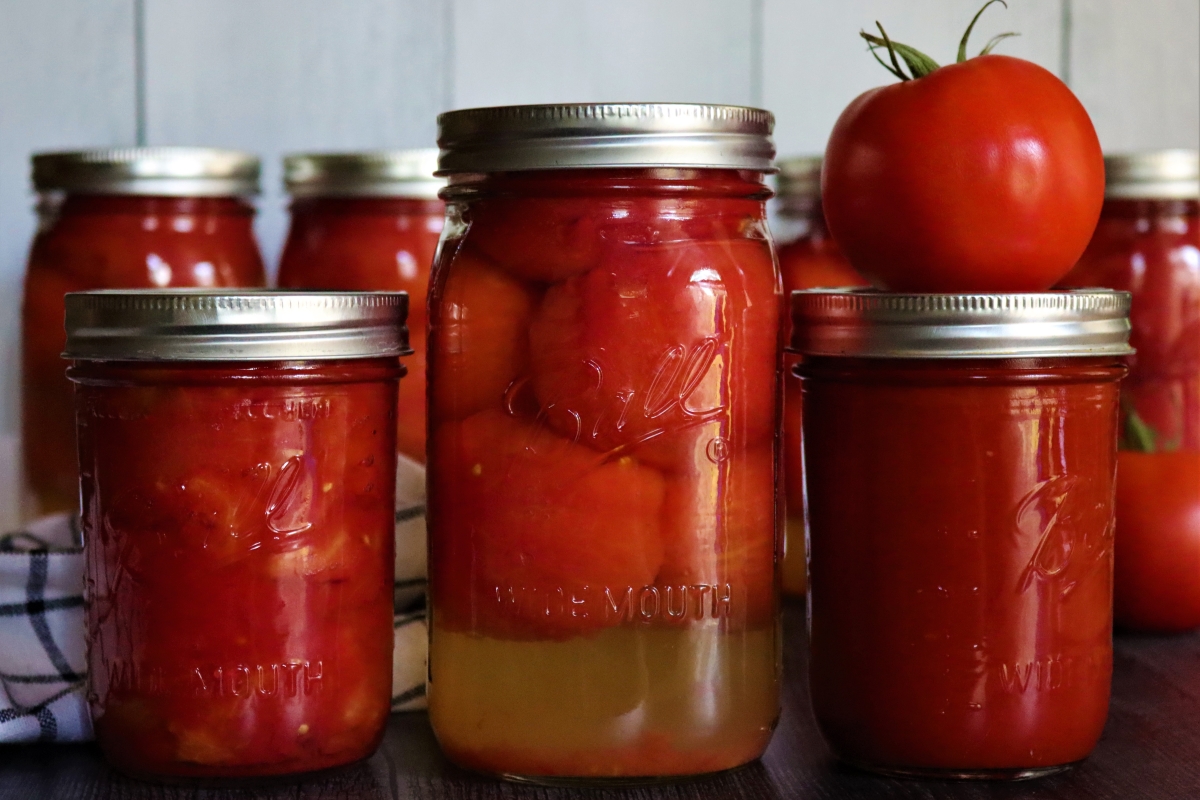
Acid Sources for Safely Canning Tomatoes
Tomatoes are changing; did you know that?
As more hybrid tomato varieties appear, the less acidic these varieties become. When you read the description for many hybrid tomatoes, they make a note that they’re less acidic, and perfect for salads and sandwiches.
This development makes sense; tomatoes with less acid are ideal for fresh eating, but acidity plays a huge part in canning. Acidity determines whether or not you need to use a boiling water canner or a pressure canner.
Acidic tomatoes are needed for canning to prevent botulism poisoning and bacterial concerns. The botulism bacteria grows and produces toxins in sealed jars of food kept at room temperature if the pH is above 4.6. Meats, vegetables, and non-acidic foods have a pH range well above 4.6.
Tomatoes, though they seem “acidic” have a pH that’s right around 4.6, which means they’re too close to the danger zone to water bath can without added acidity (and a tested recipe).
Some are slightly above, some slightly below a safe water bath canning pH of 4.6. Choosing heirloom canning varieties doesn’t help, since garden conditions can also impact acidity. How their raised (more water, less water, sunlight, fertilizer, etc) can all impact their pH too.
Since the acidity level is closer than meats and veggies, the USDA recommends adding small amounts of acid to bring it down to the recommended safe level. Home preservers need to know this because many old-time recipes never mention adding acidity to the recipe; it’s common in modern recipes. Adding an appropriate amount of acid makes it safe to use boiling water canning, provided you’re using a tested recipe.
The USDA recommends adding lemon juice, citric acid, or vinegar to your recipes to increase the acidity level. Here are the recommendations:
- Add two tablespoons of lemon juice per quart of tomatoes, or one tablespoon for pints.
- Use ½ teaspoon of citric acid per quart of tomatoes, or ¼ teaspoon for pints.
- Add four tablespoons of 5% vinegar per quart of tomatoes, but it might change the flavor of your recipe.
It’s recommended to add the acid into your jars before adding any liquids and tomatoes to your jars.
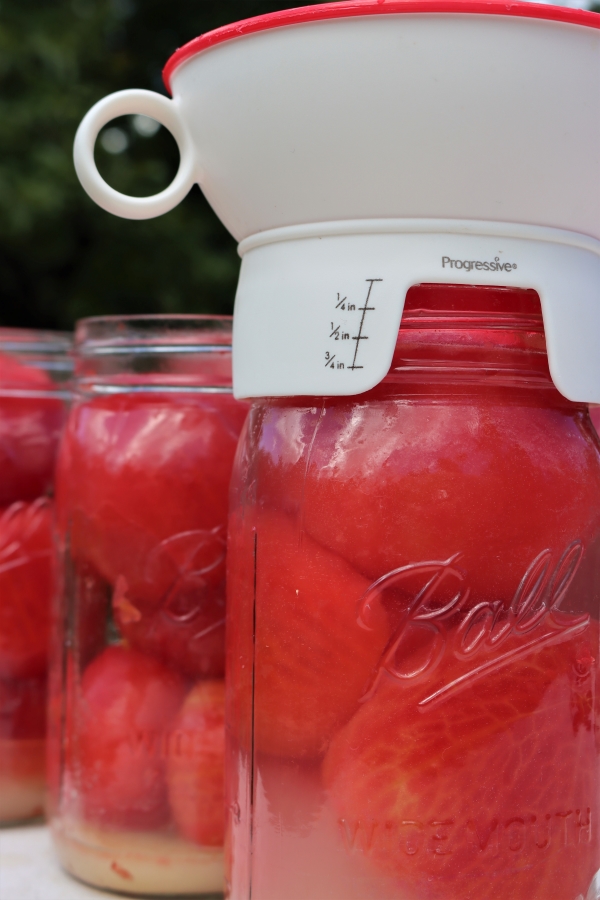
Tomatoes that aren’t super ripe tend to have more acid; green tomatoes are more acidic than ripened fruits.
Never can tomatoes from frost-killed or dead vines, and you need to make sure your tomatoes are free of bruises or significant blemishes.
Water Bath or Pressure Canner?
When you want to try different tomato canning recipes, you’ll see that some people say you need to use a pressure canner, and some say you only need to use a water bath canner.
This controversy is because of the different pH ranges in tomatoes. If you can tomatoes with a higher pH level, there might not be enough acid to safely can tomatoes in a water bath canner.
Tomatoes are a borderline acid food. Some varieties contain more acid than others, but this is fixable at home as I mentioned before.
If you add lemon juice, citric acid, or vinegar, you can ensure that the tomatoes are acidic enough to safely can in a water bath canner.
The only time you HAVE to use a pressure canner when canning tomatoes is if you can tomato sauce with meat. Sometimes, other added vegetables lower the pH too, as with mushrooms and onions in pasta sauce.
In that case, if you have a tested recipe for water bath canning that adds a good bit of acidity (often as lemon juice, red wine, or balsamic vinegar), then it’s possible to water bath can pasta sauce. Still, most pasta sauce recipes recommend pressure canning these days, for added safety.
(And as I mentioned, they’re always pressure canned when they contain meat.)
Otherwise, both kinds of canners work safely, depending on whether or not you add extra acid.
When you decide between a water bath or pressure canner, you have to decide whether or not you want to add acid. If you don’t want to add acid, then you’ll need to use a pressure canner.
If you’re having trouble deciding, here are some advantages and disadvantages to consider.
Water Bath Canning Tomatoes
For those who are new to canning, hot water bath canners are easier to use. You need boiling water – that’s about it. You don’t have to worry about checking pressure or venting the canner. Plus, they’re less expensive.
However, they’re only for high-acid foods, and since tomatoes are borderline acidic, you have to add acid to them.
If you’re not familiar with water bath canning, read my beginner’s guide to water bath canning before getting started.
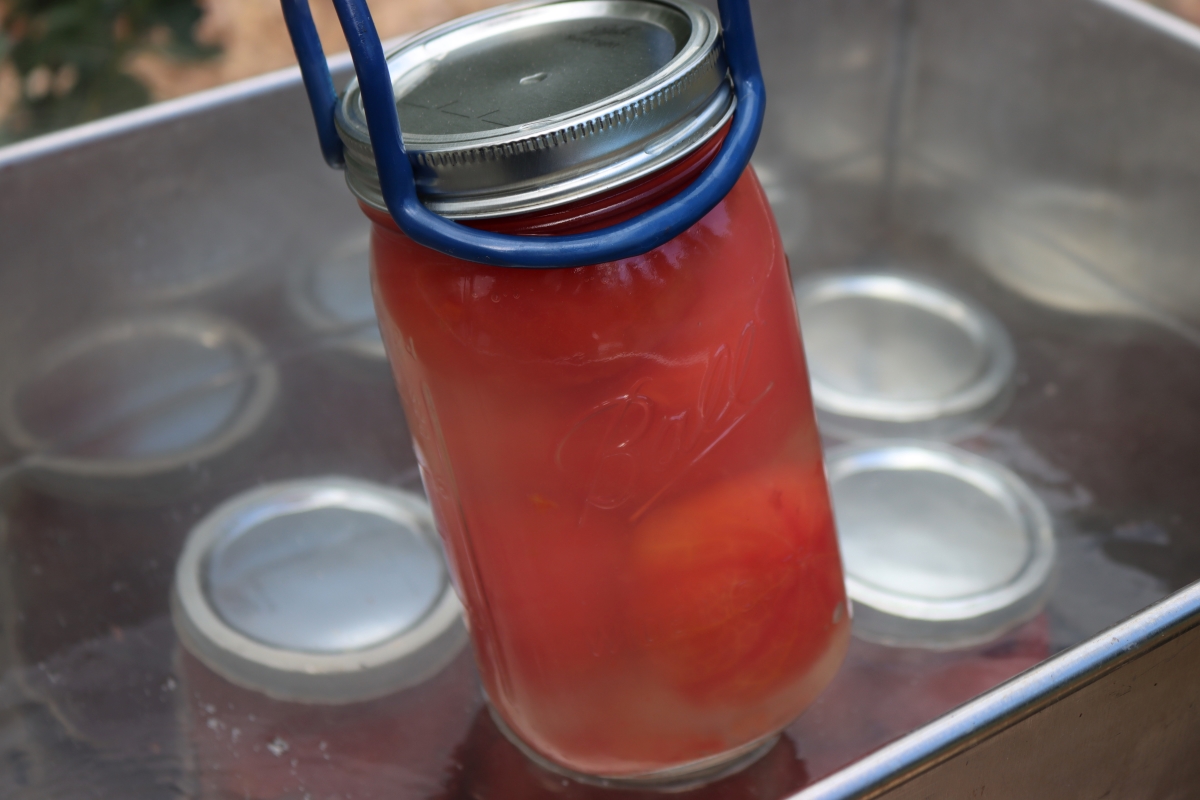
Pressure Canning Tomatoes
When you use a pressure canner, you never have to worry about bacteria, mold, yeast, or bad enzymes. You don’t have to add citric acid, lemon juice, or vinegar to lower the acidity level.
However, these take more time to can properly, and pressure canners are expensive. I know that it’s an investment that not everyone is prepared to make.
If you’re not familiar with pressure canning, read my beginner’s guide to pressure canning before beginning.
Preparing Tomatoes for Canning
Before canning tomatoes, you have to know how to prepare tomatoes for canning. The first step is washing the tomatoes, and then you move on to the step that most people don’t like – peeling the tomatoes.
The simplest way to peel tomatoes is by blanching. Place the tomatoes in boiling water for 60-90 seconds, flash cooking them under the skin. Then, you drop the tomatoes into an ice water bath, stopping the cooking process. The skin cracks as the flesh expand, and you’ll be able to use your fingers to remove the skin.
Take a look at my guide on how to peel tomatoes for canning.
Removing the seeds is optional. Some people don’t mind seeds; they are barely noticeable in things like spaghetti sauce or chili. However, if you want to use your tomato sauce for ketchup, you’d notice the seeds. If your kids are like mine, they won’t want to eat ketchup with seeds.
Most people remove the seeds by hand, cut the tomatoes in half, and use a spoon to scoop out the seeds. It only takes a few seconds.
Another option is to use a tomato food mill. Food mills remove both the skins and the seeds. All you have to do is wash and simmer the tomatoes to make them softer for the food mill. After they’ve softened, run the tomatoes through a food mill to remove the skin and seeds.
It’s important to note that removing the peels and seeds is optional. There are times when I’m in a rush, and I don’t remove them.
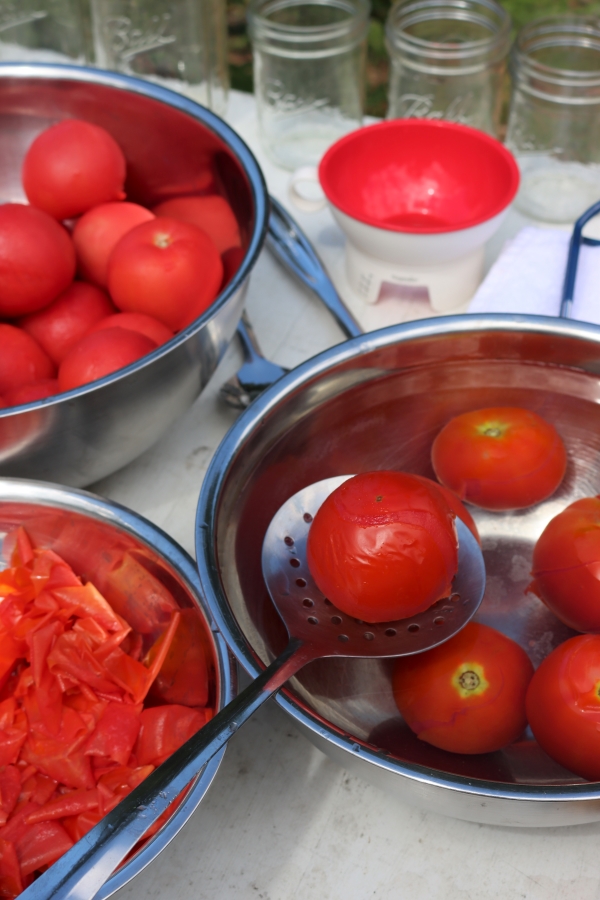
Canning Whole Tomatoes (Or Halves)
Canning whole or halved tomatoes is one of the most versatile and straightforward tomato canning recipes. It lets you preserve whole tomatoes in a shelf-stable way without limiting how you can use the tomatoes in the future.
I prefer to remove the peels because they’ll slip off during the canning process anyway. I don’t want them floating around in the jar. Coring the tomatoes is also another optional step, but chances are you’ll core them before turning them into the final product. So, do whatever works for you. You have to add acid before canning whole tomatoes,.
You also decide if you want to can the whole tomatoes in water, tomato juice, or with no added liquid. No added liquid means they juice off on their own, so there will be liquid in the jar after the process.
If you decide to can in tomato juice, you have to double your processing time because it’s a thicker liquid that takes more time for heat to penetrate. The same goes for raw packing without added liquid because the canning process needs to allow the tomato juices to come out independently.
Raw packing in water is the easiest choice. After peeling, pack the tomatoes into jars along with lemon juice, then cover with boiling water, and process for 45 minutes in a water bath canner. If you want to use hot packing, you have to cook the tomatoes in boiling water before filling the jars with the tomatoes and cooking liquid.
~ Canning Tomatoes (Whole or Halves) ~
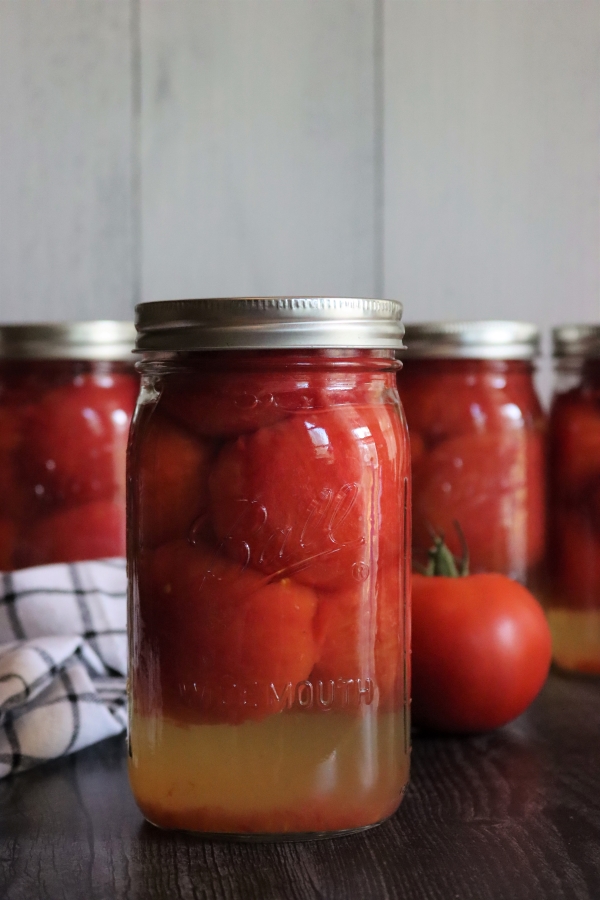
Canning Diced or Crushed Tomatoes
Another simple tomato canning recipe is canning diced or crushed tomatoes. It’s nearly as versatile as canning whole tomatoes. Jars of diced tomatoes can be used to make tomato sauce, salsa, chili, tomato soup, and so many other recipes.
The process for canning diced and crushed tomatoes is the same, but making them is slightly different. It’s worth learning the difference.
Diced tomatoes are exactly what you imagine – diced tomatoes that are heated and packed into jars before canning.
Crushed tomatoes are made by heating and mashed ¼ of the tomatoes, making a sort-of quick tomato sauce before adding the rest of the diced tomatoes. This is a thicker tomato sauce.
No matter whether you want diced or canned tomatoes, it all starts with peeling and dicing the tomatoes. Use the same tomato peeling method that you used for the other tomato canning recipes.
After peeling, squeeze the tomatoes to help remove the seeds and dice the tomatoes. The pieces don’t need to be the same size; aim for ½-1 inch wide dice or strips. Then, put your diced tomatoes into a pot without any added liquid. Let the diced tomatoes heat up, releasing their juices.
~ Canning Diced or Crushed Tomatoes ~
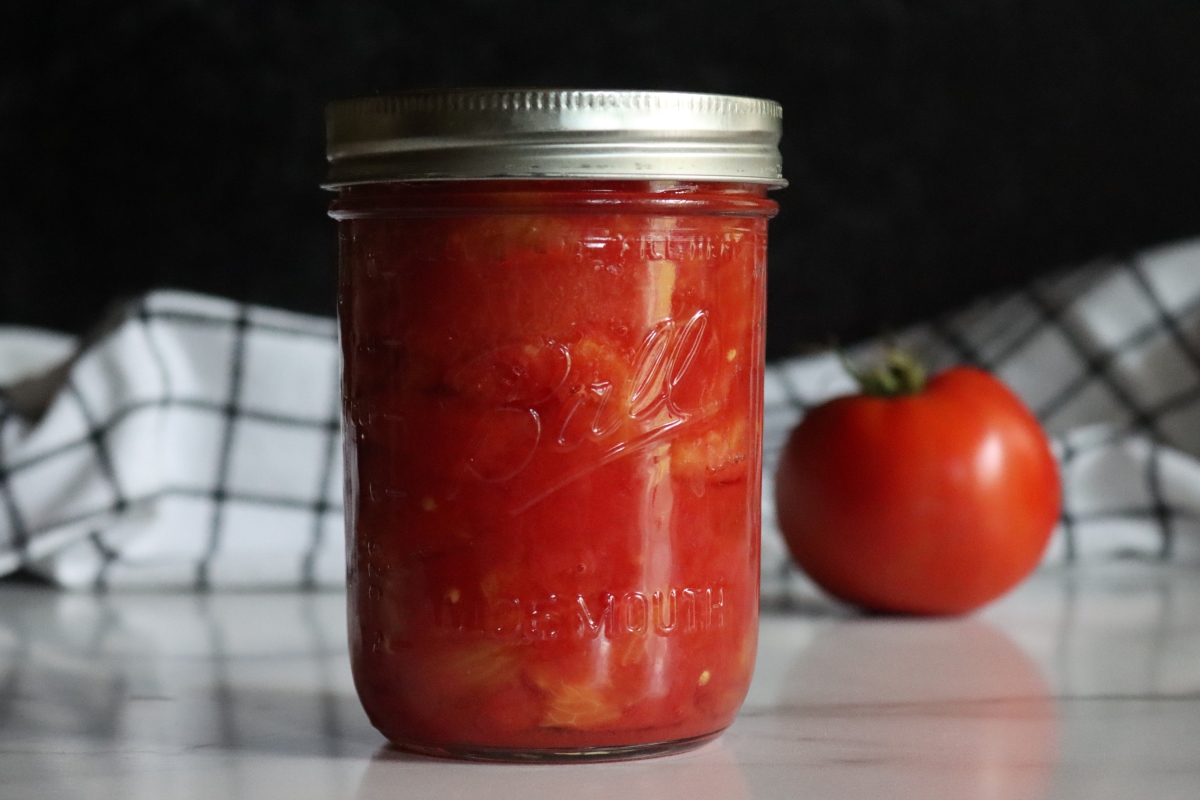
Canning Tomato Salsa
Salsa is one snack that my family cannot get enough of in our pantry. We eat jars of it every month; I think we have become salsa snobs.
That being said, canning salsa comes with a bit of risk for new canners because you need to use a tested recipe. People produce new tomato salsa canning recipes all the time, but when you add things like peppers and onions, it reduces the acidity even more.
Remember, recipes have to have a safe amount of acid for you to safely can in a water bath canner. Finding tested recipes from safe websites ensures you aren’t water bath canning recipes without enough acid – that’s dangerous.
That said, there are tons of amazing salsa canning recipes for you to try! Here are a few examples.
- Tomato Salsa for Canning ~ Grow a Good Life
- Canning Fresh Salsa ~ Ball Fresh Preserving
- Classic Canned Salsa ~ Old World Garden Farms
Canning Tomato Juice
I like to have jars of canned tomato juice in my pantry along with tomato sauce, but you need to know that they aren’t the same. Tomato sauce is thicker than tomato juice because the juice contains more water. It has no pulp, seeds, peels, or anything other than the juice from the tomatoes.
Canning tomato juice starts with washing and removing the tomato stems. Add one to two pounds of chopped-up tomatoes into a saucepan, heating them up and crushing as they cook. Continue to add more tomatoes as you go, bringing it to a boil as you add all of your tomatoes.
Once all of your cut-up tomatoes are boiling, let them simmer for 5 minutes. Then, it’s time to start juicing the tomatoes. It’s easiest to use an electric juicer to separate the juice, but make sure you can add heated food to your juicers. Some are different, and you might need to let it cool down slightly.
I recommend putting your tomato juice through a sieve or food mill to make sure all skins and seeds are removed. You’re looking for a juice-like consistency without any pulp at all. Next, add acid and heat to a boil. When you fill your canning jars, you need to leave ½ inch headspace and process for 35 minutes (pints) or 40 minutes (quarts) in a water bath canner. If you use a pressure canner, process for 20 minutes at 6lbs for pints or 15 minutes at 11lbs for quarts.
Once you have canned tomato juice, you have to find ways to use them. Here are some of my favorite ways to use tomato juice.
- Make a Bloody Mary at home!
- Use it as a soup base
- Cook a pot roast in tomato juice
- Use it when you make chili
If you want to learn how to can tomato juice, here are some basic instructions to follow.
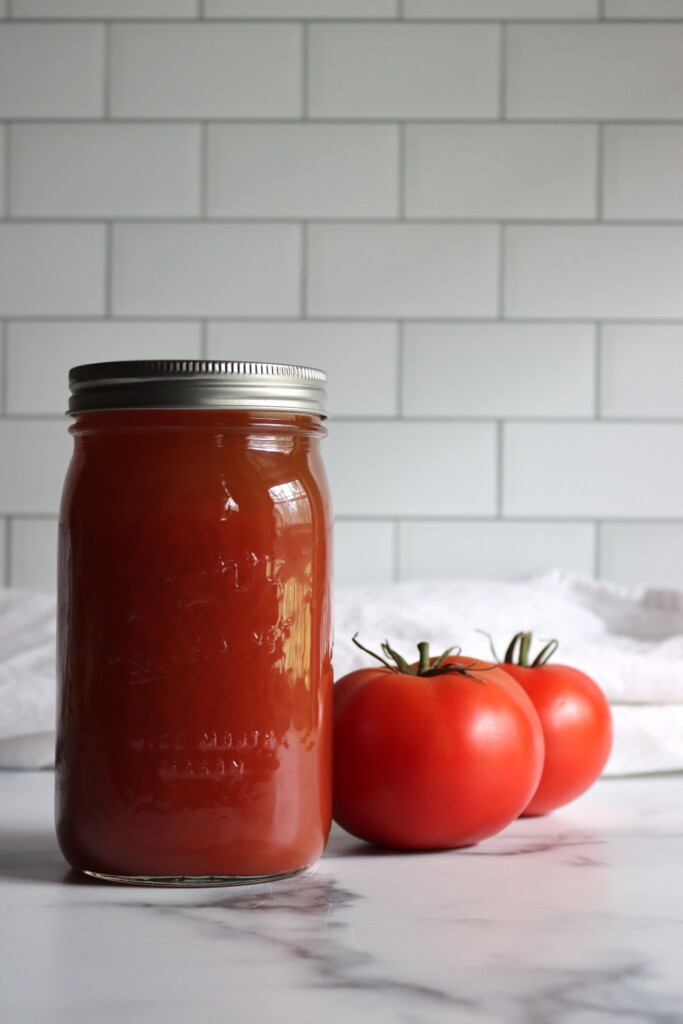
Canning Tomato Sauce
I always make sure to can homemade tomato sauce for our pantry. It’s the needed base for spaghetti sauce, curries, chili, and dozens of other recipes that I make. Even if you don’t like to eat pasta often, canning tomato sauce is a must-do for all canners.
At first, I admit I never liked home-canned tomato sauce. I never made it thick enough; it was always too thin for pasta, but I spent time figuring out how to make a perfect consistency. Thicker tomato sauce requires more tomatoes.
I like to strain tomato sauce because it removes the peels and seeds, ensuring that you have the right texture. My kids don’t like the stringiness of the peels. I use my KitchenAid food strainer attachment that removes both for me, but you also can use a hand-cracked tomato strainer. They both get the job done.
Adding seasoning is up to you. I often can unseasoned tomato sauce because I never know exactly how I plan to use each jar. I season my spaghetti sauce differently than I season pizza sauce. You do have to add acid though, so don’t forget!
I walk you through all the steps to can tomato sauce at home in my step-by-step guide to canning tomato sauce.
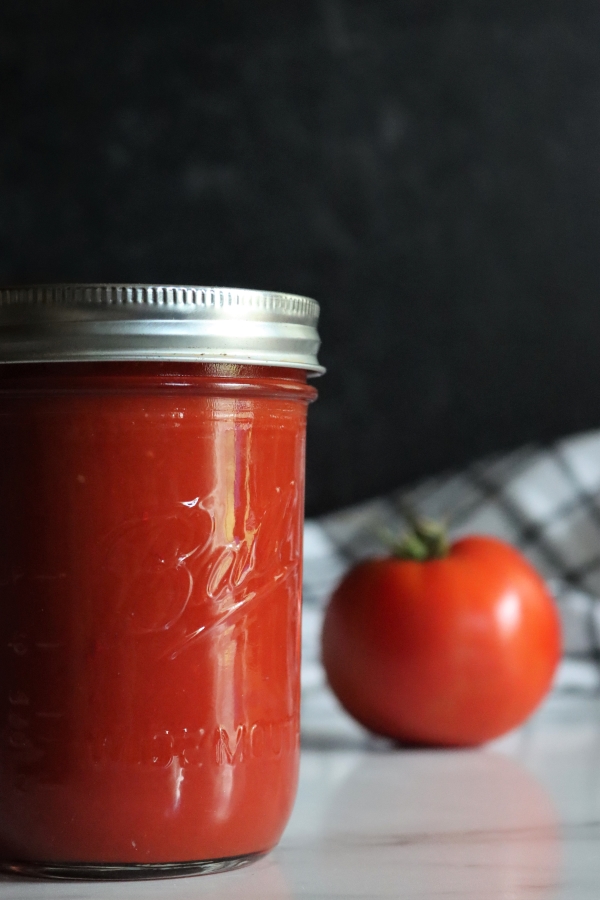
Canning Spaghetti Sauce
Another one of the popular tomato canning recipes that you might want to learn is how to can spaghetti sauce. Depending on the recipe you use, chances are you will need to use a pressure canner to safely make the spaghetti sauce.
You can try all the different spaghetti sauce recipes. It can be chunky or have a pureed texture. You can add different veggies like mushrooms, garlic, celery, green peppers, and onions. The sky’s the limit if you use a pressure canner.
Another option is to can your spaghetti sauce with meat. The meat needs to be cooked ahead of time; don’t put it in your sauce raw. Both types of sauce need to have one inch of headspace and proper pressure canning times.
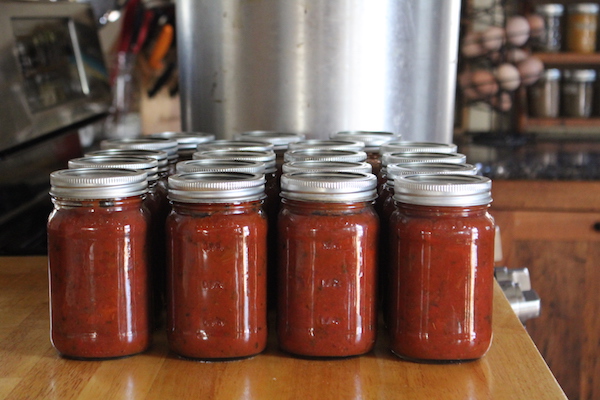
Canning Tomato Paste
Another popular tomato canning recipes is making tomato paste. The difference between tomato sauce and tomato paste is that paste is a tomato sauce that is reduced until thicker. If you run out of tomato sauce, you can use tomato paste as a substitute.
Tomato paste is like a concentrated version of tomato sauce that has more flavor and nutrients. It’s often added to recipes in small amounts for added flavor. Since tomato paste has all of the liquid removed, you’re adding flavor, not liquid.
The problem with canning tomato paste is that it takes more patience and prep work than other tomato canning recipes. It’s best to use Roma-style tomatoes because they contain less moisture and fewer seeds.
The great thing about making tomato paste is that the process is the same as making tomato sauce but it takes longer. The sauce is cooked down for a longer time, making it much thicker. Tomato sauce needs to be reduced by ⅓ or ½ depending on how thick or thin you want it. Tomato paste has to be reduced by ¾ or more of its original volume.
You can use my guide for canning tomato paste here.
Tomato paste offers you plenty of ways to use it. I add tablespoons to soups and stews for flavor. Toss some paste over chicken for seasoning, or use it in your spaghetti sauce to help make it thicker.
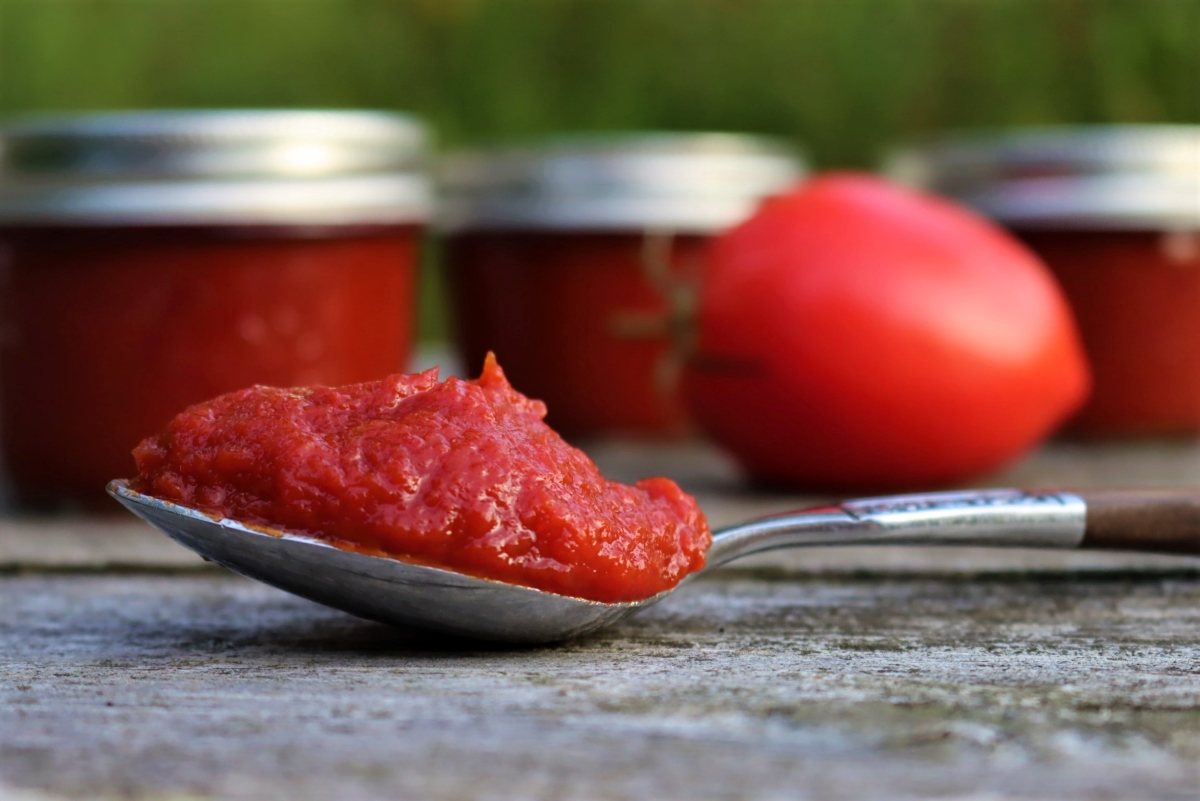
Canning Tomato Ketchup
Say goodbye to store-bought ketchup and start canning tomato ketchup at home. The process is very similar to making tomato sauce with a few differences.
You definitely want to make sure that you remove all of the peels and seeds from the tomato sauce. Ketchup has a specific texture that you want to replicate when you make it at home. It shouldn’t have any chunks either.
The awesome thing about making homemade ketchup is that you can find different spices to make a flavor you love. Most recipes use vinegar and sugar, but they also include spices like onion, garlic, and cinnamon to come up with the perfect taste.
Use a water bath canner to process homemade ketchup. Leave ¼ inch headspace and process half-sized pint jars for 15 minutes. You might want to try a few different recipes to find one you really love.
Canning Tomato Jam
Tomato jam is sort of like ketchup but so much better. It’s sweeter and perfect on so many different foods. One of the best reasons to make tomato jam is that it’s so easy. The peels and seeds are left in the recipe for texture; you don’t want it to have the same texture as ketchup.
Cooking tomato jam requires cooking it for 1.5 to 2 hours at a time, depending on how high you keep the heat. Unlike other jams, you don’t have to add pectin; it will have the thickness you want without pectin.
After you have the right texture, taste, and thickness, tomato jam is processed in a water bath canner with a ¼ inch headspace for 20 minutes. Tomato jam tastes great on grilled cheese sandwiches, toast, eggs, hot dogs, or fish.
Try my tomato jam recipe here.
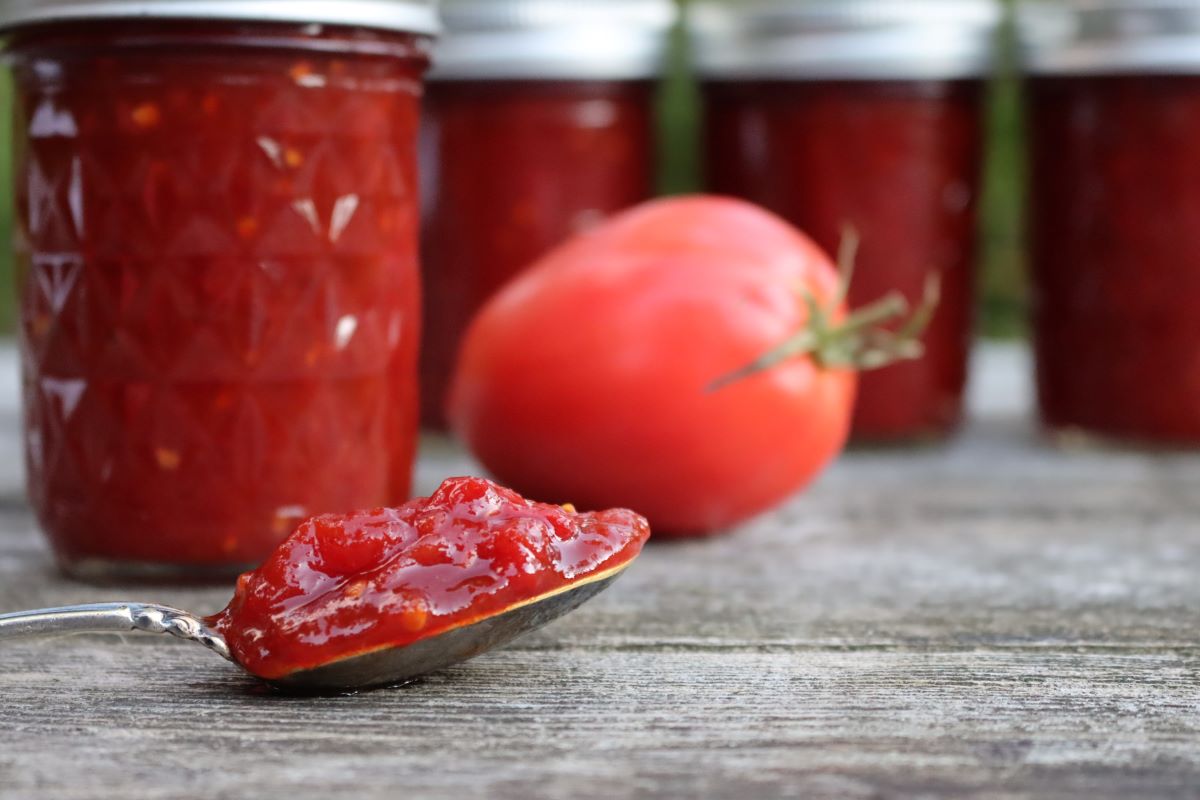
Creative Tomato Canning Recipes
Once you get through the basic tomato canning recipes, you’ll eventually want to try some creative canning recipes for tomatoes.
Here are some of the best recipes for canning tomatoes that you should add to your pantry.
- Canning Homemade Barbecue Sauce
- Canned Enchilada Sauce
- Tomatoes with Zucchini or Okra
- Canned Pizza Sauce
- Tomato Soup
- Rotel-Style Tomatoes
- Stewed Tomatoes and Vegetables
Cherry Tomato Canning Recipes
Most people assume that cherry tomatoes are only good for fresh eating, but their sweet flavor and size make them perfect for canning. They work great in different recipes, and they’re easy for those new to canning.
Here are some cherry tomato canning recipes.
- Canning Whole Cherry Tomatoes
- Pickled Cherry Tomatoes
- Balsamic Cherry Tomato Caramelized Onion Conserve
- Grape Tomatoes in White Wine Vinegar with Rosemary
- Dilled Grape Tomatoes
- Cherry Tomato Salsa
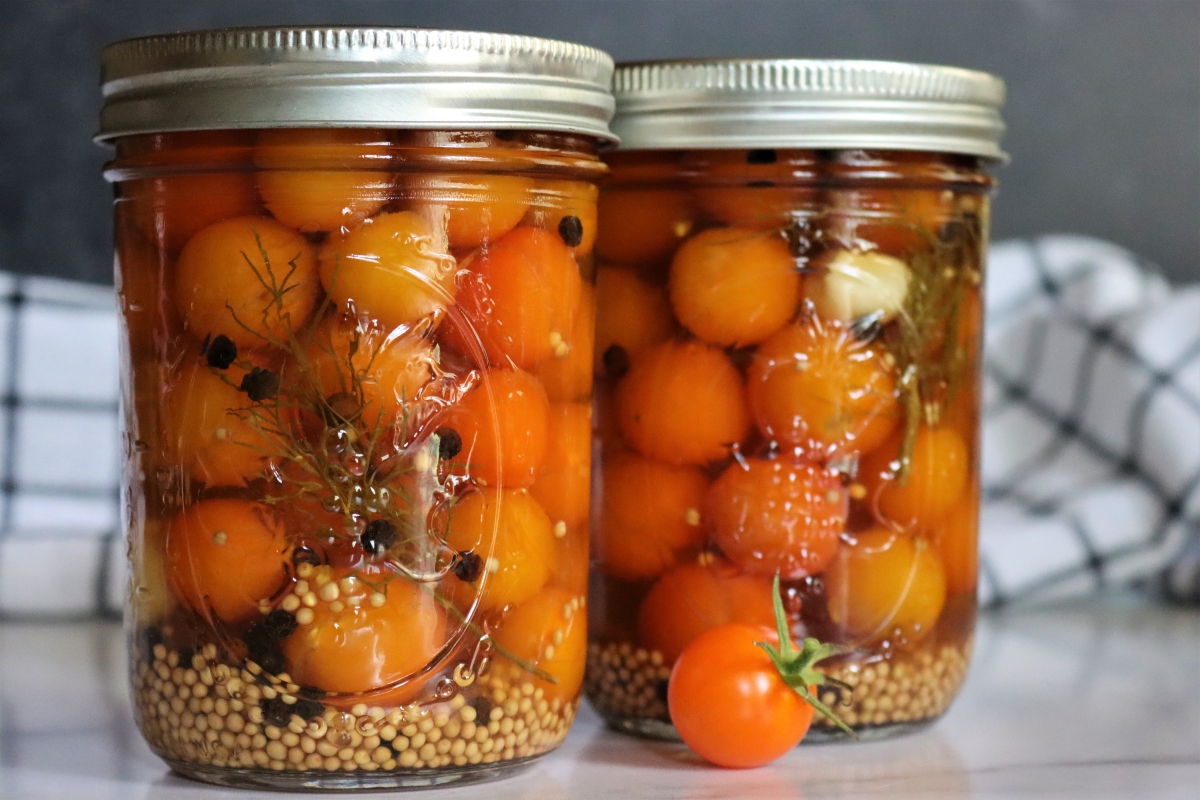
Green Tomato Canning Recipes
Canning green tomatoes is a great way to use up the unripened tomatoes on your plants that will be killed by early frosts. When I see a killing frost in the forecast, I take all of the green tomatoes off of the plant before nightfall. Then, I need to find all kinds of ways to preserve green tomatoes.
The interesting thing about canning green tomatoes is that they’re more acidic than fully ripened tomatoes. They preserve their texture better during prolonged cooking. Green tomatoes have an interesting flavor that works well in savory and sweet recipes, so it’s a great idea to preserve as many green tomatoes as possible.
Here are some green tomato canning recipes to get you started.
- Canning Sliced Green Tomatoes
- Green Tomato Salsa Verde for Canning
- Green Tomato Pie Filling
- Canning Enchilada Verde
- Green Tomato Chutney
- Old Fashioned Green Tomato Jam
- Pickled Green Tomatoes
Besides canning, there are literally dozens of tasty green tomato recipes to try, so don’t worry about early frosts!
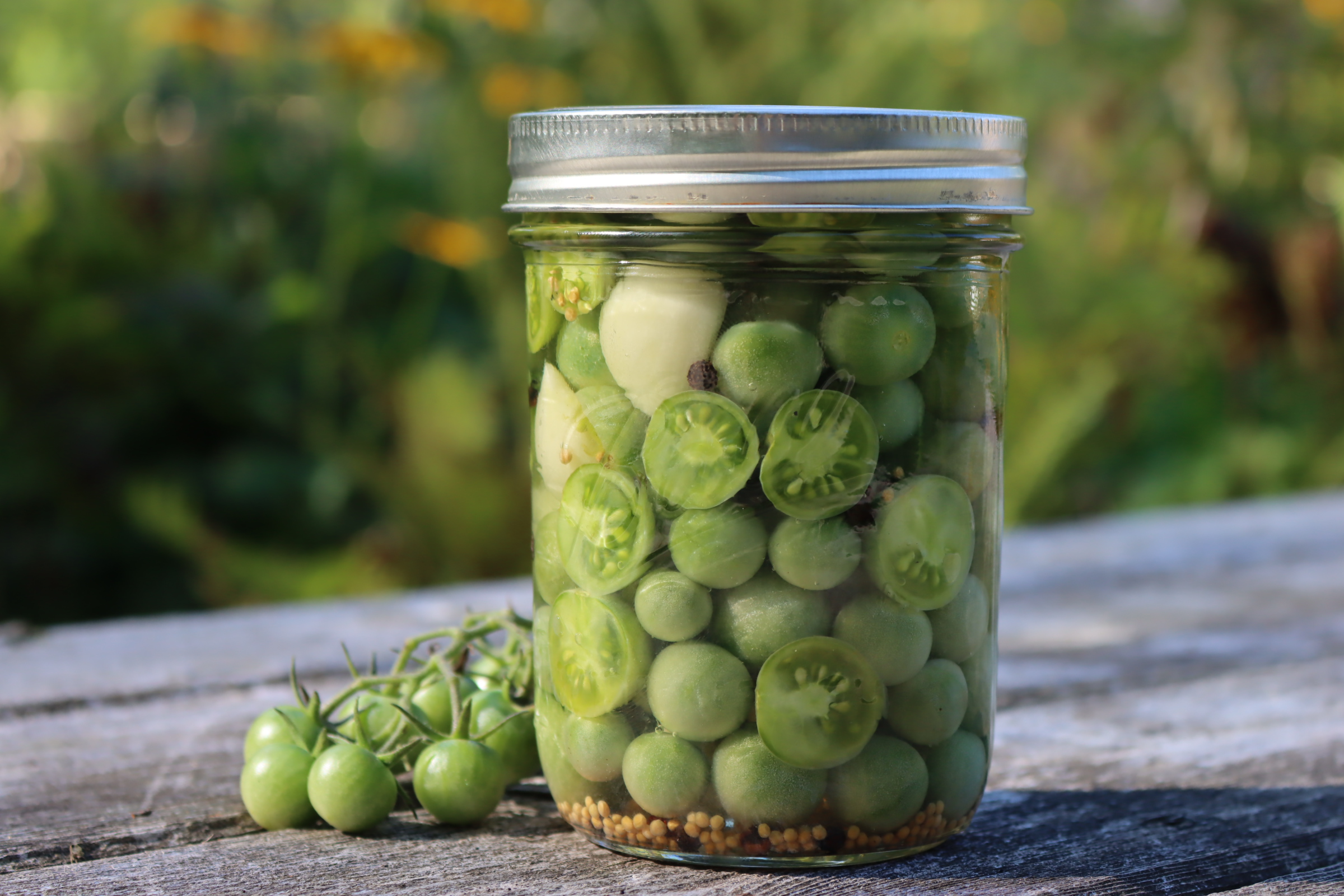
Summer Canning Recipes
Preserving more than just tomatoes this season?
Food Preservation Tutorials
Think outside the jar with these food preservation tutorials:
- How to Make Cider Vinegar
- How to Make Small Batch Wine
- How to Make Mead (Honey Wine)
- Beginners Guide to Cheesemaking
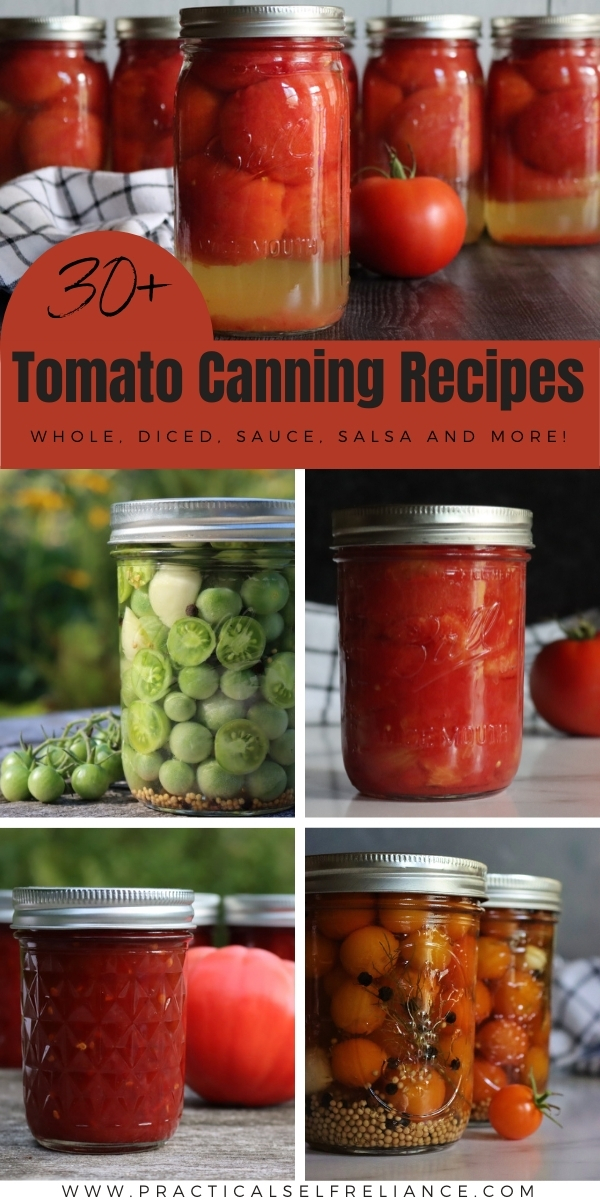
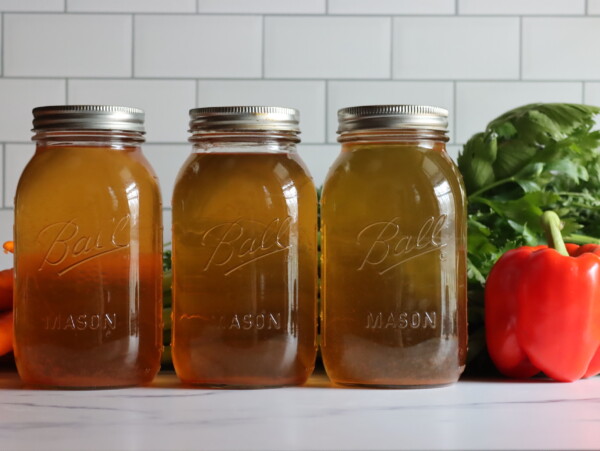
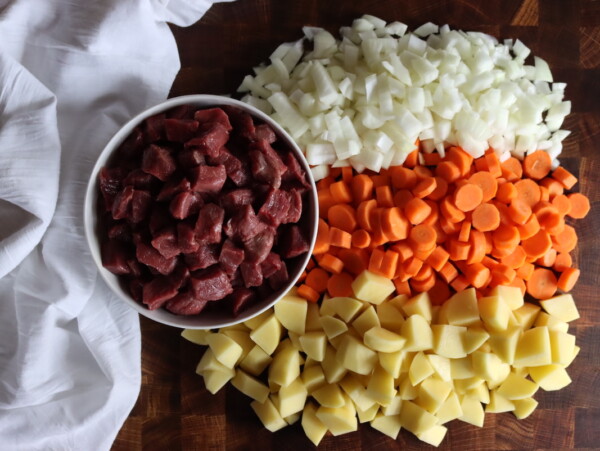
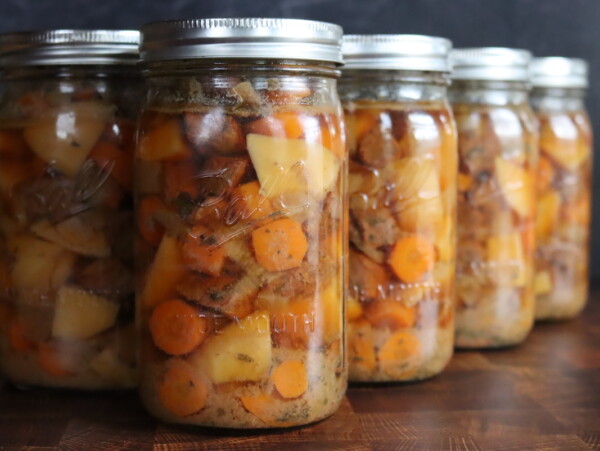
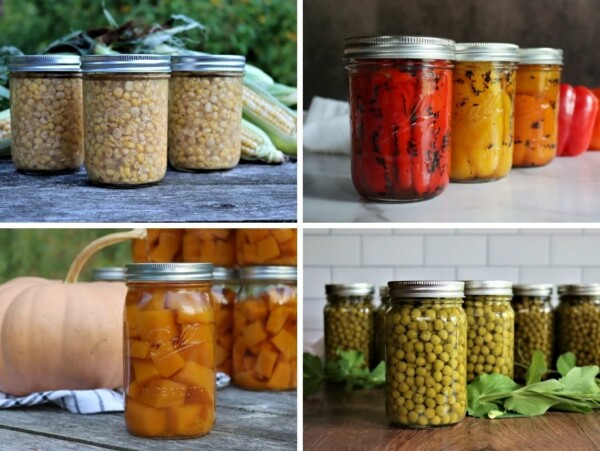
To save energy and a hot kitchen I follow the directions to separate the seeds and skins with a quick boil, and then blend/process the remaining tomato creating a sauce. I then put the liquid into sterile plastic 1 gallon milk jugs, cover tightly, and then put them in the sink cap side down (upside down) and let them sit over night. In the morning the pulp has separated from the clear water and floats to the top. We simply drain off the water slowly and we’re left with a much thicker sauce. I then cook this for a short while to thicken and can it.
I came across this page while searching for a new recipe to try when canning tomatoes. I have been canning for roughly 40 years and never knew about the acid issue you so clearly explain here. I am not exaggerating when I say I am thrilled that I read this webpage. I will definitely add acid from now on. Thank you.
Wonderful, so glad it was helpful!
Can you can tomatoes after they are thawed from the freezer?
Yes, this is actually my favorite way to can tomatoes. I can keep them in the freezer until I am ready to process them and the skins come off so easily.
Thank you for such a comprehensive list! I discovered fermenting salsa last year and fell in love with it! I used pint jars to ferment in and the standard salt to water ratio. I left them on the counter for several days until they tasted delicious and then added all the pint jars to a single half gallon jar to wait in the fridge until taco nights. My family enjoys the flavor and I enjoy getting good probiotics in them.
You’re very welcome. So glad you enjoyed the post.
can you use an old ricer to separate seeds and skins from the tomatoes?
That should work as long as the holes are small enough to keep the seeds and skins from passing through.
I use a metal mesh colander and the back of a ladle to separate my seeds and skins. I throw the washedtomatoes in my large crock pot, run a knife through the pile and cook them uncovered on low until soft. I then use a stiff whisk to mash them before putting them in the colander (over a pit to catch the sauce.) I also add peppers and garlic at this stage snd they get pureed through the mesh.
I also season and dehydrate the remaining pulp, and grind it into tomato powder- a real “pop” of flavor when added to recipes, or just olive oil for dipping bread.
Thanks for sharing that!
The Ball Blue Book and its website have several salsa recipes.
Rakuten.com used to have a pH meter for sale at a reasonable price. If you use it, puree all of your ingredients in a blender before testing.
Smoky Mountain style green tomato relish is inexpensive and tasty. Use cider vinegar, finely chopped green tomatoes, onions, and bell peppers (hot green peppers optional). Sweeten to taste and add a good dose of celery seed and mustard seed. Process pints 30 minutes at sea level, increase for altitude.
I still don’t believe that skinning tomatoes is necessary if you run them through the food processor. My jars seal just fine, keep well, and do not taste bitter.
What about freezing tomato sauce, etc. Do you still need to add acid?
If you are freezing there is no need to add acid.
I forgot to add: This also doubled the recipe. I followed your recipe for 9 pint jars, but I ended up with 18 jars.
I just tried your canning recipe for regular tomato sauce. I have been on a quest to find a good canning recipe that gets rid of the problem of separation, and I have finally found it by using your recipe with a few tweaks. First and foremost of importance is your suggestion of adding the processed tomatoes in batches. This way, it kills two birds with one stone…you get to cook as you’re dicing the tomatoes. This is a very important step also in helping to ensure that separation does not occur because it keeps the tomatoes hot all the time (heating and cooling is a large contributor to separation), but instead of doing a hard boil during this stage, I had to just keep it to a simmer. Otherwise, it kept burning the tomatoes. Once I was finished, I brought it to a boil as you suggest. And this is the most important tweak to your recipe: I don’t throw out the skins or the seeds at all. If you like thick (not watery) tomato sauce, you must have the skins and the seeds. Also, by keeping these ingredients, your reduction time is reduced to only heating up the tomatoes the first time. You don’t need a second boiling process. Once the tomatoes reached the boiling point for the five minutes you suggest, I then took the finished product and processed it in a blender. What resulted was a thick, beautiful tomato sauce with a beautiful color. I just put the blended tomato sauce back on the stove to keep hot only for the canning process itself, but I did not boil it again. And guess what? Not a single jar has separation. Not even one.
Many people choose to peel and see their tomatoes for sauce because of the texture. Even if you like the texture with the skins included, it could be a safety issue. Most tested recipes are done with peeled tomatoes. There is a considerable amount of bacteria on the skins so it is considered much safer to go ahead and remove the skins.
I never peel or seed either. Putting through the pulse on my blender, you’d never know. Washing them well and keeping the heat like you suggested is what I have done for years also. I’m glad you posted Dergy. 🙂
Do you have any approved Tomato Salsa recipes for pressure canning? I’m not interested in water bath. I want to include peppers, onions, corn and tomatoes. I have invested in a pressure canner and I want to take full advantage of all my possible canning options.
The only approved recipe that I am aware of for pressure canning salsa is this one https://nchfp.uga.edu/how/can_salsa/mexican_tomato_sauce.html which is actually more of a sauce rather than a chunky salsa. The extra heat from the pressure canning process would most likely greatly affect the texture of a more chunky salsa. I can understand your desire to utilize your pressure cooker as much as possible. My suggestion for salsa would be to prepare the salsa according to the directions and then use your pressure canner as a water bath canner. Here is an article that emplains the process. https://www.simplycanning.com/using-pressure-canner-as-water-bath-canner/